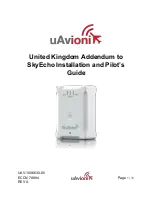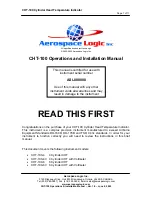
function is preserving food temperature, not lowering it. Therefore, when loaded, the foods MUST ALREADY BE AT
THEIR PRESERVATION TEMPERATURE.
This is why foods that have been overheated must never be introduced in the cabinet. Use padded gloves when
handling ice-creams and frozen food.
For best cabinet operation we recommend:
• Loading the products as explained in the preceding section;
• Never leave top glass sliders open or ajar (fig. 13 on page 13). It is advisable to often check that all sliders are
closed: you will thus avoid unnecessary energy consumption and frost build-ups on the walls and you will also allow
better foods preservation.
DESCRIPTION OF CONTROLS
The front left side of the cabinet contains the control panel.
CAUTION: thermostat adjustment is reserved for the technical after-sales service. The cabinets is factory-set for cor-
rect operation.
LAMP REPLACEMENT: these jobs are reserved for the technical after-sales service only, which you are invited to con-
tact in case of problems.
HOW TO USE THE DUAL BT/TN SELECTOR SWITCH
The base of DUAL BT/TN versions is equipped with a switch for the selection of either BT operation (low tempera-
ture for the preservation of ice creams and frozen food) or TN operation (positive temperature for the preservation
of fresh prepacked food). The selected temperature is obtained by inserting the appropriate key into the switch and
turning it to the desired position, as shown in figure 16 of page 14.
9. ORDINARY MAINTENANCE
IMPORTANT: During maintenance or cleaning, be sure that the light in the working area is sufficient. If necessary,
use an additional source of light. Exercise caution also when near the hot and moving parts marked with the rele-
vant symbol. The use of heavy-duty gloves is recommended.
CAUTION: The refrigerating system does not alter defrost water in any way, which is the product of the steam con-
tained in the air circulating inside the display case. Defrost and wash water may nonetheless mix with pollutants
from the products preserved in the appliance, from preservation agents, from product remains, from the acciden-
tal crush of recipients containing liquids or from the use of improper detergents (see section 10 point 1). THE
WATER PRODUCED BY THE SYSTEM MUST THEREFORE BE DISPOSED OF THROUGH THE SEWER OR PURIFICA-
TION SYSTEM IN COMPLIANCE WITH THE REGULATIONS IN FORCE.
CAUTION: BEFORE ANY JOBS ON THE CABINET, DISCONNECT THIS FROM THE POWER SUPPLY BY UNPLUG-
GING IT (fig.17).
CLEANING THE CABINET
1) Clean all outer parts of the cabinet weekly using only a soft dry cloth. Never clean it using inflammable or scou-
ring agents, alcohol, acetone or solvents. NEVER CLEAN THE CABINET BY THE USE OF WATER JETS. Clean glass
surfaces using glass-cleaning products only. The use of water is not recommended here, as it may cause calcium
deposits to build up.
GLASS SLIDERS to keep sliders running smoothly, when doing the weekly cleaning remove all dirt and dust that
may have built-up on the frame. As for crown-head curved sliders, an ad-hoc "lubricating pen" is supplied with the
equipment, which needs to be used when sliding covers no longer run smoothly. After cleaning, lubricate the frame
in which covers slide using the ad-hoc pen.
It is advisable to regularly check that the perimetric gasket around the glazing is in good working order.
22







































